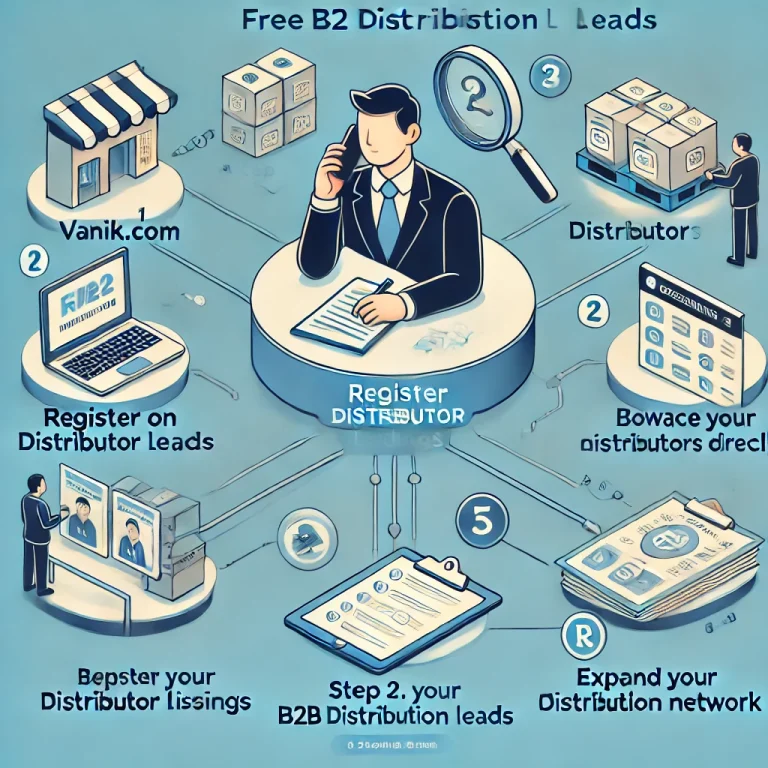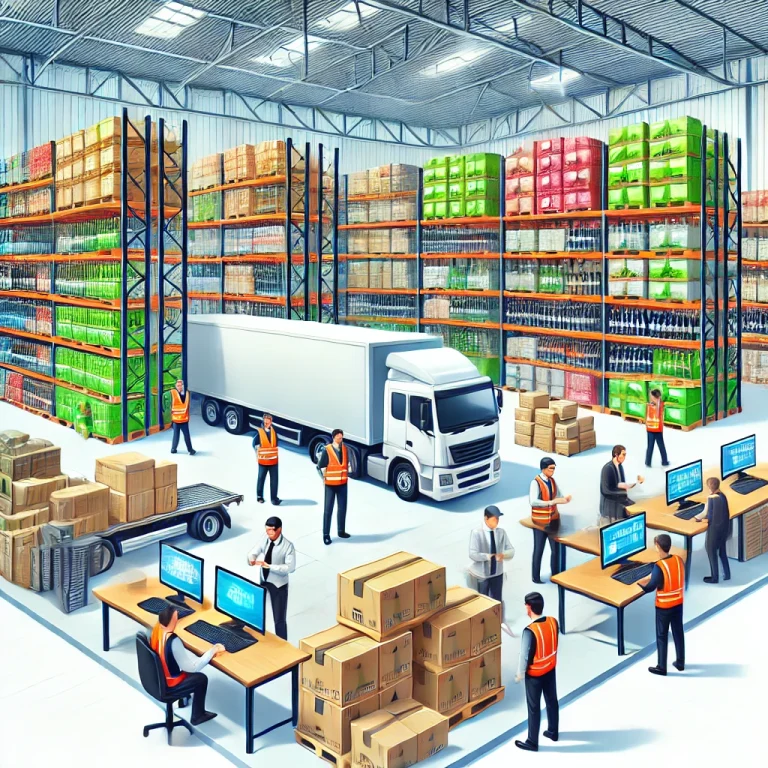In the vast and diverse Indian market, distribution is the lifeline that ensures products reach every corner of the country. For small and medium enterprises (SMEs), building a robust B2B distribution channel is crucial for growth. However, the Indian distribution landscape is highly fragmented and often unorganized, making the task of finding reliable distributors a challenging endeavor.
In this guide, we’ll walk you through practical tips, essential do’s and don’ts, and examples to help you navigate the complexities of the Indian distribution network. Whether you’re just starting or looking to expand your reach, these insights will equip you to connect effectively with distributors and grow your business.

Understanding the Indian Distribution Landscape
India’s distribution trade is unique. It’s characterized by a mix of traditional and modern practices, a vast number of small-scale distributors, and a strong emphasis on personal relationships. Here are some key points to consider:
- Fragmentation and Diversity:
- The market is segmented by regions, languages, and consumer preferences.
- A single strategy doesn’t fit all; you need to tailor your approach to different regions.
- Unorganized Sector:
- Many distributors operate on informal terms with limited technological integration.
- Reliable information on potential partners’ background, sales volume, and market reach can be hard to obtain.
- Role of Technology:
The Process of Finding and Evaluating Distributors
Finding the right distributor is the first step, but converting that lead into a successful business relationship is the ultimate goal. Here’s how to approach this process effectively:
Do’s:
- Conduct Thorough Research:
- Before reaching out, gather comprehensive information about potential distributors. This includes their sales performance, network reach, and expected profit margins.
- Example: If you’re selling health supplements, find distributors who specialize in similar products and have a robust network in pharmacies and health stores.
- Prepare Detailed Information:
- Be ready to provide detailed information about your product, including packaging, pricing, margins, and marketing support.
- Tip: Create a professional presentation or a detailed brochure that covers all aspects of your product offering.
- Maintain Professionalism:
- Treat distributors as business partners. They are investing their resources into promoting and selling your product.
- Case Study: A startup in the consumer electronics sector secured a key distributor by presenting a well-prepared business plan and answering all queries confidently.
- Be Persistent and Follow Up:
- Don’t be discouraged if you don’t receive immediate responses. Regular follow-ups show your commitment and seriousness.
- Tip: Use tools to track email opens and engagement. Follow up with a call or another email if you see they’ve read your proposal.
Don’ts:
- Avoid Being Pushy:
- Understand that distributors are not just buyers; they are partners who will help you expand into new markets.
- Example: Instead of pushing for an immediate deal, focus on building a long-term relationship that benefits both parties.
- Don’t Be Overly Salesy:
- Prioritize relationship building over aggressive selling. Trust and mutual respect are the foundations of successful B2B transactions.
- Tip: Share stories and testimonials from other satisfied distributors or customers to build trust.
- Don’t Hesitate to Walk Away:
- If a distributor shows little interest or is not a good fit, move on. The right partner will align with your goals and values.
- Example: A beverage company walked away from a deal with a large distributor because their priorities didn’t align, eventually finding success with a smaller, more enthusiastic partner.
Additional Tips for Effective Distribution
- Start with Personalized Proposals:
- Avoid cold calls. Instead, send a personalized email introducing your product and business.
- Tip: Address the distributor by name and mention specific ways your product can benefit their portfolio. Check Vanik’s automated system of establishing trusted relationship
- Leverage Your Sales Data:
- If you’re already selling through channels like Amazon or D2C, highlight your sales growth and market presence.
- Example: A skincare brand impressed a potential distributor by showcasing their rising sales figures and positive customer reviews.
- Highlight Unique Benefits:
- Clearly communicate what makes your product unique and how it meets consumer needs.
- Case Study: A home appliance manufacturer highlighted their product’s energy efficiency and innovative features, which appealed to eco-conscious retailers.
- Consistent Follow-Up:
- Stay on the distributor’s radar with regular and professional follow-ups. This demonstrates your dedication and reliability.
- Tip: Set reminders for follow-up emails or calls to keep the conversation going.
Choosing the Right Size of Distributor
For startups and less established brands, it’s often more beneficial to work with small to medium-sized distributors. Here’s why:
- More Personalized Attention:
- Smaller distributors are likely to give more focus and attention to your product compared to larger ones who might prioritize established brands.
- Example: A gourmet food company partnered with a medium-sized distributor who was passionate about niche products, resulting in better market penetration.
- Shared Growth Opportunities:
- Distributors who are just starting or are in the growth phase are often eager to expand their portfolio with innovative products.
- Tip: Look for distributors who express interest in growing their market presence and are open to new opportunities.
Leveraging Experienced Professionals
Experienced sales professionals transitioning into distribution bring valuable market knowledge and connections. They can be instrumental in the success of your product:
- Market Expertise:
- These individuals have a deep understanding of market dynamics and customer preferences.
- Example: An apparel company benefited from partnering with a distributor who previously managed large retail accounts and understood consumer trends.
- Established Networks:
- They have existing relationships with retailers and wholesalers, which can accelerate your market entry.
- Tip: Evaluate their network and past experience to ensure alignment with your product’s target market.
Conclusion
Building a successful distribution channel in India requires a strategic approach, patience, and the ability to adapt to the diverse market landscape. By following these do’s and don’ts, conducting thorough research, and leveraging technology and professional expertise, SMEs can navigate the complexities of B2B distribution and achieve sustainable growth.
Remember, distribution is not just about moving products; it’s about forging partnerships that can drive mutual success. Focus on building trust, offering value, and being a reliable business partner, and you’ll pave the way for a successful distribution network.
For more guidance and resources on connecting with distributors, visit Vanik and explore our YouTube channel @EzyDistribution.
Feel free to reach out for any assistance or questions about your distribution strategy. We’re here to help you succeed!
PS: In case you are to connect with wholesalers and wholesale bazaars – visit b2b-bazaar


